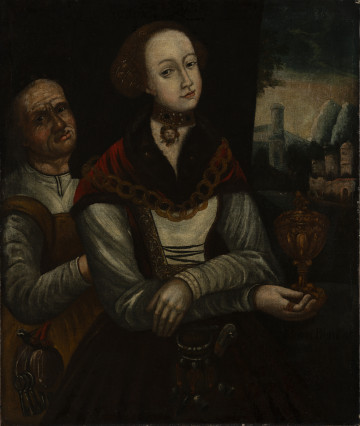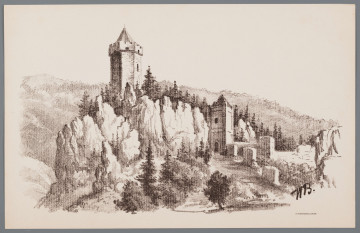
Creamer jug
1825 — 1835
National Museum in Lublin
Part of the collection: English stoneware – Wedgwood
Chinese porcelain with printed decoration appeared in England in the 2nd half of the 18th century, then gained recognition in Europe. The use of printing techniques to decorate ceramics became one of the important steps in the industrialisation of production. Such decoration was a mechanical operation, requiring no skilled workers. It favoured the simplification and acceleration of production and at the same time allowed reducing the prices of products. Therefore, in England they began to look for methods of mechanically transferring the ornament onto the vessels.
At first the decoration was made in glazed form on porcelain wares, later also in underglaze form on both porcelain and faience wares; first patterns were engraved on copper plates to create such decoration. The grooves were filled with paint and transferred onto the wet ceramic top of the vessel using gelatine flakes and then, around 1800, onto a sheet of special paper.
At first, blue and black predominated, then other colours: green, brown, and pink began to be introduced. In 1810, gold printing was patented, and in the 1840s, the colours began to be combined, and multicolour printing appeared. The method, which allowed the reproduction of decorations on a mass scale, spread throughout the European continent. These patterns were imitated and copied, often using English designs. English products, especially Wedgwood pottery, were popular all over Europe. It was due to the careful workmanship. Despite the industrialisation of every element of production, high quality and aesthetics of the ceramics were taken care of, however, the price was kept at a reasonable level.
A cup with a print from the Wedgwood factory was an element of breakfast tableware. Undoubtedly, it used to be a table decoration and a vessel from which morning tea was drunk. Today, being part of a museum collection, it proves that an object of everyday use, but carefully designed and made, can be a valuable acquisition in a collection.
Magdalena Norkowska
Author / creator
Dimensions
cały obiekt: width: 5,6 cm
Object type
dish
Technique
ceramic technique
Material
soft porcelain
Creation time / dating
Creation / finding place
Owner
The National Museum in Lublin
Identification number
Location / status

1825 — 1835
National Museum in Lublin

1701 — 1800
National Museum in Szczecin

1913
National Museum in Lublin
DISCOVER this TOPIC
National Museum in Lublin
DISCOVER this PATH
Educational path